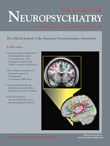A Rare Case of Epilepsy in a 16-Year-Old Girl With Fallot Tetralogy Attributed to CNS Heterotopia and Pachygyria
SIR : We report a case of a 16-year-old girl who was admitted to our clinic because of partial seizures. The clinical neurological examination and the neuropsychological tests were normal. The laboratory tests (i.e., CBC, blood biochemistry, urine tests, immunologic assay tests) were normal. The CSF analysis and cultures, as well as the CSF protein electrophoresis, were normal. Cerebral computed tomography (CT) was normal and ECG showed RBBB (right bundle branch block) and LAH (left anterior hemiblock). However, the EEG revealed abundant generalized slow wave activity with occasional focal and diffuse spikes and spike wave activity.
The brain magnetic resonance imaging (MRI) scan revealed subcortical heterotopia of the gray matter extending across the right ventricle. More specifically, along the surface of the occipital horn of the right ventricle and at its posterior part as well as at the right temporal horn, there was an irregularly lobulated mass of gray matter that extended into the hemispheric white matter giving signals similar to the cerebral cortex. There were also similar signals of the cerebral cortex at the temporal horn of the left ventricle. The cortex overlying the heterotopia was abnormal, too. Pachygyria at the cortex of the right temporal parietal occipital area was identified.
Both heterotopia and pachygyria which presented at the brain MRI of our patient may reflect possible anatomic epileptogenic areas. 1 The above conditions represent developmental abnormalities of the CNS caused by neuronal migration defects. The embryogenetic period when the above developmental abnormalities took place is estimated to be between the sixth and the seventh gestational week when Fallot tetralogy was developed.
Comment
This is the first case report in the literature of comorbid CNS migration defect and Fallot tetralogy. The heart development defect allows us to not only estimate the possible embryogenetic period but also to raise suspicion for implication of the hypoxic blood supply of the defective heart in the etiology of the neuronal migration defect.
Defective neuronal migration results in the formation of a disorganized cerebral cortex in which neurons are not normally connected with one another. 2 Neurons that failed to reach their destination at the cortex remain at subcortical positions and differentiate composing islands of mature nerve cells, resembling cortical neurons (subcortical band heterotopia) separated from the overlying cortex by an intervening band of white matter. The gyral pattern is also abnormal and is the basis for the morphologic classification of neuronal migration defects into lissencephaly, pachygyria, and polymicrogyria.
1. Raymond AA, Fish DR, Sisodiya SM, et al: Abnormalities of gyration, heterotopias, tuberous sclerosis, focal cortical dysplasia, microdysgenesis, dysembryoplastic neuroepithelial tumour and dysgenesis of the archicortex in epilepsy: clinical, EEG and neuroimaging features in 100 adult patients. Brain 1995; 118:629–660Google Scholar
2. Barkovich J, Kuzniecky RI: Gray matter heterotopia. Neurology 2000; 55:1603–1608Google Scholar



